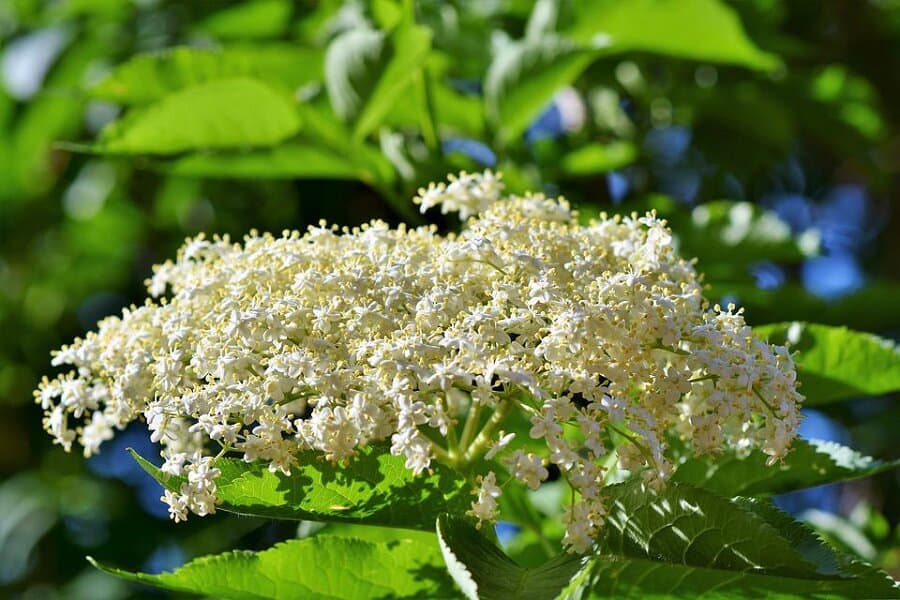6 Best Medicinal Type Of Plants
From time immemorial, people have used medicinal plants for the treatment of various diseases, and the healing properties of herbs have been repeatedly mentioned in the works of philosophers and doctors at various times. Plants in that distant time were both food and medicine. Information about the use of healing properties of plants can be found in the monuments of ancient cultures (Sanskrit, ancient Hebrew, Chinese, Greek, Latin, etc.).

The health of a modern person also largely depends on the quality and quantity of biologically active substances of plant origin. The use of medicinal plants is one of the effective, often alternative methods of preventing many common diseases. In addition, thanks to the plant picture identifier app, the use of plants has become as simple and convenient as possible today. The Lily Plant app allows one to find out the name of a plant from the picture and get its brief description.
General Types of Plants Used for Medicine
It is practically impossible to compile a list that contains medicinal plant names. Or it will be extremely long. In total, more than 20 thousand species of medicinal plants are known in the world, mostly they are used in folk medicine.
However, scientists are constantly studying the composition of medicinal plants, extracting active components from them, and investigating the effect and the possibility of use in the treatment and prevention schemes of a wide variety of diseases. Modern classifications are based on the therapeutic action and effects of medicinal plants. In particular, according to the pharmacological classification, medicinal plants are divided into groups:
- Affecting the cardiovascular system;
- Affecting the gastrointestinal system;
- Affecting the central nervous system;
- Affecting the endocrine system;
- Affecting the immune system;
- Affecting the respiratory organs;
- Affecting the kidneys and urinary tract;
- Affecting the skin;
- Used for infectious and inflammatory diseases;
- Used for vitamin deficiency;
- Used for bleeding, etc.
A significant part of medicinal plants belongs to several chemical or therapeutic groups at the same time. Medicinal plants are mostly used in the form of infusions, decoctions, alcohol tinctures, extracts, as well as in the form of biologically active additives (BAD) – products of the food, pharmaceutical, and biotechnological industries.
List of the Best Medicinal Plants Names with Descriptions
Read more about the best medicinal plants below. If plant identification will be required, do not forget about the possibility of using the Lily Plant app.
Garlic
In the modern world, plants with a wide range of medicinal effects are especially valued. These include garlic, which contains a large number of vitamins, micro- and macronutrients. Garlic also contains allicin, an antioxidant that neutralizes free radicals that cause cancer.
This plant has the following beneficial properties:
- Helps in the treatment and prevention of colds;
- Prevents heart attacks;
- Strengthens immunity;
- Reduces cholesterol levels, etc.
St. John’s Wort
St. John’s wort is a unique medicinal plant with a whole range of useful properties. In the old days, it was called the “cure for 99 diseases”. The main use of St. John’s wort in its composition. It contains up to 13% tannins, about 1% flavonoids (hyperoside, rutin, quercitrin, myricetin, leucoanthocyanins), saponins, dyes (hypericin – 0.1-0.4%, pseudohypericin, hyperin, frangulaemodinantranol), essential oil (0.2 -0.3%), resinous substances (17%), carotene, ascorbic acid, vitamin PP, and other vitamins.
Feverfew
Feverfew is a perennial herb with syllable stems forming a small shrub. Similar to daisies, white-yellow Feverfew basket-shaped inflorescences are collected in apical thyroid inflorescences. The plant has anti-inflammatory, cardiotonic, antispasmodic, and anti-migraine properties.
Milk Thistle
Milk thistle is a plant in the Asteraceae family that is widely distributed. Due to its use in the pharmaceutical and cosmetic industries, milk thistle is mainly cultivated, but it can also be found in grasslands and farmlands. Milk thistle can reach 2 meters in height. The most characteristic elements of milk thistle are bright purple flowers and leaves with spiky edges.
Seeds and grains are medicinal raw materials of milk thistle. They contain several biologically active substances such as phytosterols, tannins, organic acids, linoleic acid, and a large amount of vitamins C, E, and K. However, the most important substance found in milk thistle is silymarin. It is used to cleanse and regenerate the liver.
Poppy
Poppy has long been used in folk medicine. All parts of the plant are used to make medicines. A decoction of poppy roots relieves headaches and cures inflammation of the sciatic nerve. Seed decoctions improve digestion, and the juice from them is used as an analgesic. Poppy flower petals contain many organic acids, glycosides, anthocyanins, and vitamin C. Therefore, products using poppy petals, as well as their extracts, have an excellent analgesic and healing effect, help cleanse the blood and the body as a whole.
Violet
Violet is a beautiful and useful plant, which, due to its unsurpassed medicinal properties, is actively used in folk recipes. Due to the presence of saponin, which helps to reduce viscosity and rejection of sputum from the respiratory tract, violet has an expectorant property. Salicylic acid, which is in the composition of the plant, acts as a diaphoretic, helping to reduce the temperature. Violets contain anthocyanins, which have a diuretic effect. They help remove harmful metabolic products from the body.
Therefore, there are a lot of plants with unique medicinal properties. If you are interested in this, use the plant identification app and find out more!
